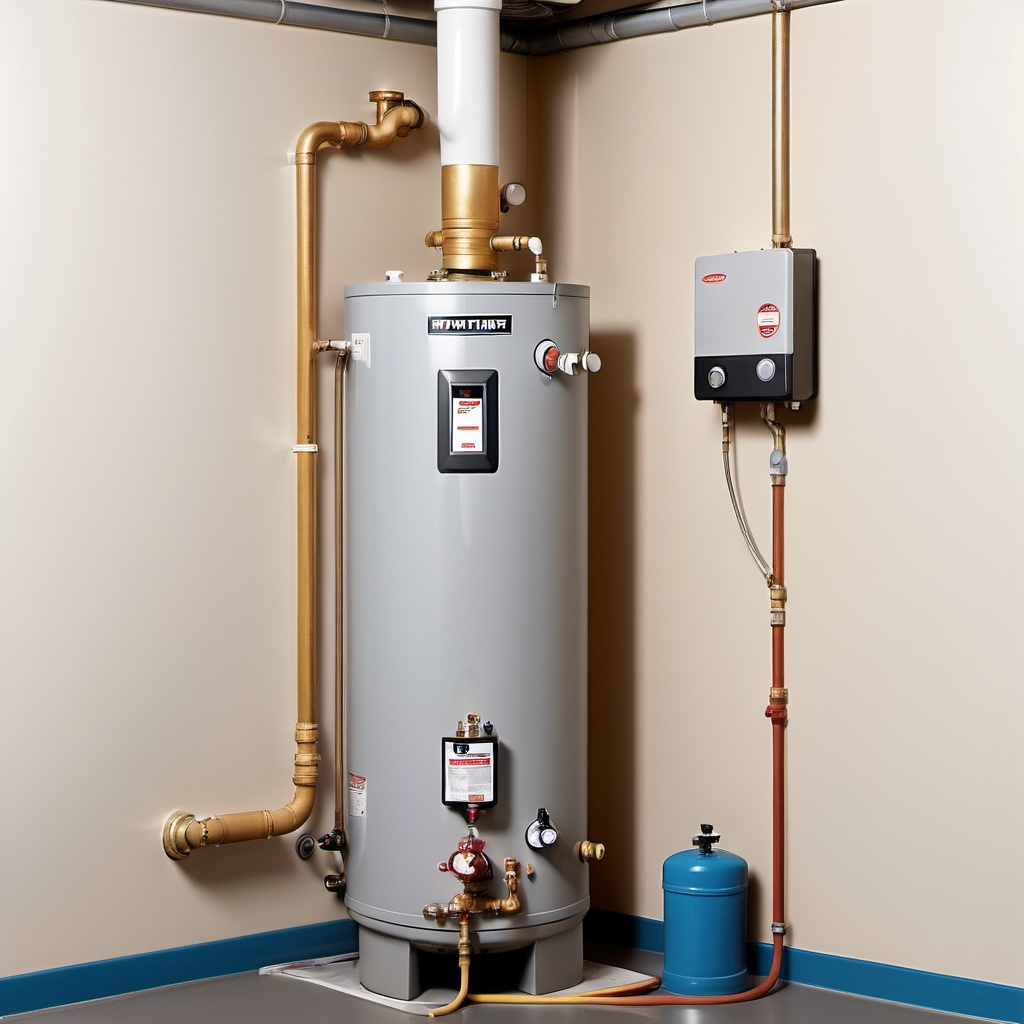Top Water Heater Issues Impacting Home Water Pressure and How to Fix Them
When your water heater malfunctions, it doesn’t just disrupt your hot water supply—it can also lead to reduced water pressure, causing frustration and potentially expensive repairs. Understanding these common water heater issues that impact water pressure and learning how to resolve them can help you maintain a comfortable and efficient home.
1. Sediment Buildup in the Tank
How Sediment Buildup Occurs:
Over time, mineral deposits from hard water accumulate at the bottom of your water heater tank, occupying space and limiting the heater’s ability to hold hot water. This buildup can also clog the dip tube, which directs cold water to the tank’s bottom for heating.
Impact on Water Pressure:
Sediment buildup not only reduces heating efficiency but can also block water flow. In homes with hard water, sediment is a frequent culprit behind low hot water pressure.
Solution:
Flush your water heater tank every 6-12 months to remove sediment. If you have hard water, consider installing a **water softener** to minimize mineral deposits. In some cases, upgrading old plumbing—like galvanized steel pipes—may be necessary to optimize water flow. Here’s a brief guide on pipe lifespan:
- Galvanized Steel: 20-50 years
- Copper: 50-70 years
- PEX: 40-50 years
- CPVC: 40-60 years
2. Malfunctioning Heat Trap Nipples
What Are Heat Trap Nipples?
Heat trap nipples prevent heat loss by blocking convective heat transfer, which helps keep water in the heater warm longer. However, these fittings can get clogged over time, reducing water flow.
Impact on Water Pressure:
If a heat trap nipple malfunctions, water pressure in your hot water taps may drop.
Solution:
If you suspect a heat trap nipple issue, contact a plumber to inspect and, if needed, clean or replace the nipples. For recurring issues, consider installing non-heat-trapping connectors.
3. Faulty Dip Tube
Role of the Dip Tube:
The dip tube directs cold water to the tank’s bottom, ensuring that hot water rises to the top. If the tube breaks or disconnects, cold water mixes with hot, leading to inconsistent temperatures.
Impact on Water Pressure:
While not directly lowering pressure, a broken dip tube results in lukewarm water that may give the impression of low pressure.
Solution:
Replace the dip tube to restore proper temperature consistency and flow.
4. Malfunctioning Pressure Relief Valve
What Is the Pressure Relief Valve?
The pressure relief valve is a safety feature that releases water if tank pressure becomes excessive. A faulty valve may leak constantly, impacting water pressure and potentially causing water damage.
Impact on Water Pressure:
A leaking valve reduces available hot water, lowering pressure at taps.
Solution:
Replace a malfunctioning valve to restore water pressure and prevent water damage. This is best done by a licensed plumber due to safety concerns.
5. Leaking Water Heater Tank
Causes of Tank Leaks:
Rust and corrosion can cause leaks in your water heater tank, leading to reduced hot water availability and lowered water pressure.
Impact on Water Pressure:
Leaking reduces hot water volume, leading to noticeable drops in pressure, especially during high-demand times.
Solution:
If your water heater tank is leaking, replacement is often the most effective solution, particularly for older models.
6. Corroded Pipes or Fittings
How Corrosion Impacts Water Pressure:
Corrosion from mineral-rich water can narrow pipe diameters, restricting water flow, especially in hot water lines.
Solution:
Replace corroded pipes to restore water pressure. Newer, corrosion-resistant materials like Copper, PEX or CPVC can provide better durability in hard water areas.
7. Partially Closed or Faulty Shut-Off Valve
Function of the Shut-Off Valve:
The shut-off valve controls water flow into the heater. If it isn’t fully open, hot water pressure can suffer.
Solution:
Check that the shut-off valve is fully open. If damaged, replace it to restore water pressure.
8. Water Supply Line Issues
Causes of Supply Line Issues:
Blockages, leaks, or external issues in the main water supply line can impact both hot and cold water pressure.
Solution:
Contact a professional plumber to assess and resolve supply line issues. Replacing old pipes or installing a water softener may improve flow.
9. Inadequate Water Heater Size for Household Needs
Understanding Water Heater Capacity:
A water heater too small for household demands may lead to inconsistent hot water availability, giving the impression of low pressure.
Solution:
Upgrading to a larger tank or switching to a **tankless water heater** can ensure adequate hot water and steady pressure.
---
Preventative Tips to Maintain Water Pressure
1. Regular Maintenance: Annual flushing helps prevent sediment buildup.
2. Water Softener Installation: This can reduce mineral buildup and corrosion.
3. Inspect Components: Check heat trap nipples, pressure relief valves, and shut-off valves regularly.
4. Monitor System Pressure: Regularly measure water pressure to detect early signs of blockages or other issues.
By understanding these top water heater issues and knowing how to fix them, homeowners can maintain water pressure, avoid costly repairs, and extend their water heater's lifespan. If water pressure issues persist, consult a licensed plumber to ensure a precise diagnosis and professional repair.
For more insights on water heater maintenance and plumbing tips, visit [RC Szabo Plumbing & Sewer]. And if you’re curious about the benefits of water softeners, check out our [Water Softener Guide].

No comments:
Post a Comment